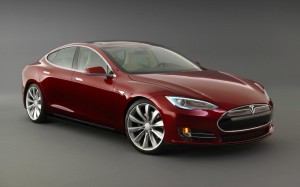A fundamentally American freedom is under attack.
The automobile defined the 20th Century in the United States. Mass production made cars available to the nation’s middle class and helped create the modern suburb, where most Americans now live.
Driving became part of coming of age in America. Road trips allowed Americans to affordably explore their nation, including its stunning parks and other natural wonders.

Over time, constant innovation has made automobiles safer, greener and more fuel efficient. Even as Americans have driven more miles, air pollution has declined.
Today’s vehicles are as varied as Americans themselves; there’s one to fit every need and personality.
It’s no wonder people become attached to their car like no other product, often giving it an affectionate name and customizing it with creative accoutrements.
Getting behind the wheel is associated with freedom and adventure — generations of songs extol this exhilarating feeling.
But human-created obstacles are quickly approaching on the road ahead.
In Colorado, two governors in a row have pushed for the adoption of California vehicle emissions standards that would punish most of the state’s drivers to benefit the elite few.
Because of Colorado’s uniquely demanding driving conditions and its residents’ outdoor vocations and avocations, three-quarters of new vehicles sold here are SUVs or pickups. Unsurprisingly, that’s different than the driving demands and vehicle mix in California, which has a higher percentage of cars.
So rubber stamping rules created by the unelected California Air Resources Board for that state’s temperate climate and uniquely bad air simply doesn’t make sense in Colorado.
The California rules mandate a huge increase in electric vehicle sales — a requirement that benefits the Golden State’s one car manufacturer, Tesla.
Tesla to date has proven incapable of mass producing an affordable electric car, so publicly funded financial perks benefit its billionaire founder, Elon Musk, and those wealthy enough to be able to pay for his pricey cars — which often serve as the second or third vehicle for these 1 percenters.
Need to pull a horse trailer or haul construction supplies? Tesla does not have the vehicle for you.
The California standards don’t just provide these carrots. They also use a stick to punish those who can’t afford or don’t want electric cars — adding thousands of dollars to the cost of those other vehicles. That will put cars financially out of reach for more Americans.
Meanwhile, cities like Denver have put their drivers on forced road diets. Even as its population steadily grows, Denver is actually reducing lanes available to drivers on key arterial streets.
Part of th![]() e motivation is to increase bicycle and bus lanes. But again, this gift comes at a cost to drivers. The goal is to discourage driving by intentionally reducing capacity and creating traffic congestion by design. Backers say it’s more “people friendly” — at least for people who don’t need to drive.
e motivation is to increase bicycle and bus lanes. But again, this gift comes at a cost to drivers. The goal is to discourage driving by intentionally reducing capacity and creating traffic congestion by design. Backers say it’s more “people friendly” — at least for people who don’t need to drive.
The bottom line is they want to force more residents to use alternative transportation by making driving as unpleasant as possible.
Since when did the automobile, which helped drive this nation’s development and success, become a public enemy? There are more licensed drivers in the United States than at any time in history. When did the 222 million U.S. drivers become a problem that requires big government fixes?
Cars are associated with economic success, especially for low-income Americans. It’s hard to hold a job if you can’t reliably get to work on time. These working families can least afford the California-style upcharges.
Coloradans love the environment as much as residents of any state. In fact, our state’s natural resources were what initially attracted many of the state’s transplants.
Weekends prompt an exodus of vehicles from the population centers to mountain resort towns, trails and campgrounds.
As an avid cyclist, I know bicycles often get delivered to the trailhead on top of a car.
Range anxiety is not an irrational fear in Colorado. Unlike the densely populated states on the East and West Coasts — which, not surprisingly, are the ones with the California emissions standards — it’s not unusual for Coloradans to drive hundreds of miles for work or play.
This is not a state where you want to see your electric vehicle’s battery warning light turn red when you’re between population centers.
These attacks aren’t some abstract threat. They will cost drivers real money and significantly lengthen commutes, cutting into productivity and family time.
In short, they will punish those of us who count on our cars and erode our freedom to drive.
Tim Jackson (@TimWJackson) is president and CEO of the Colorado Automobile Dealers Association. This column first appeared in, and was written for, The Denver Post.


